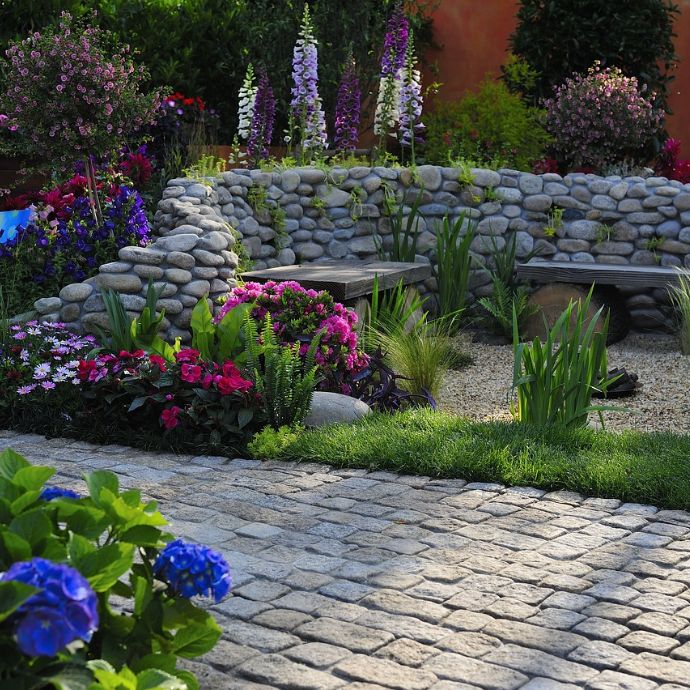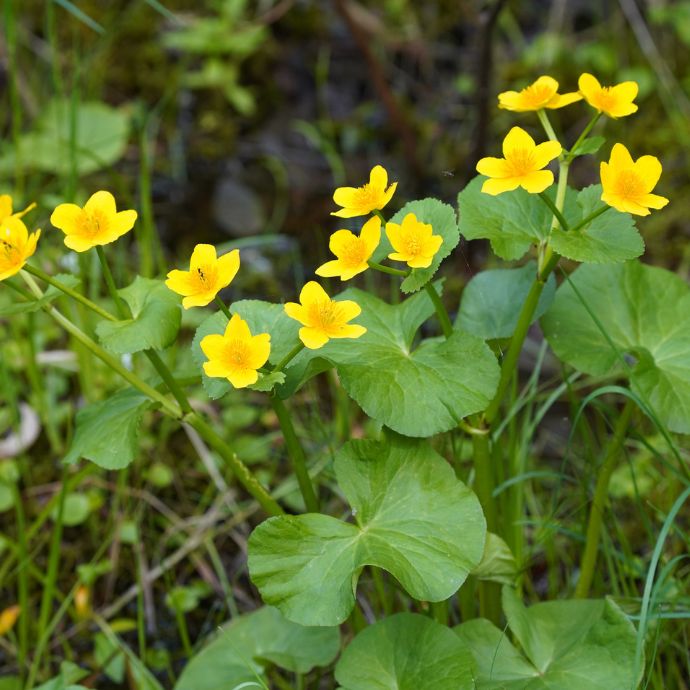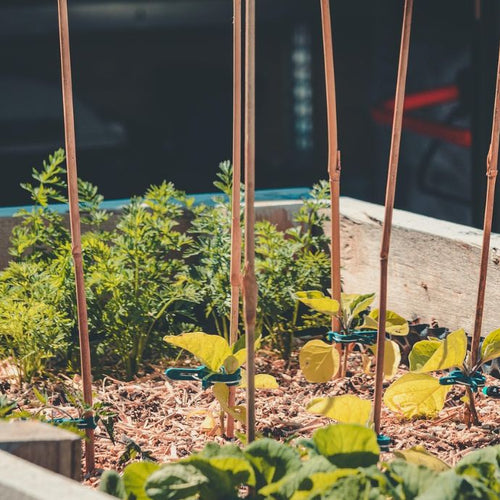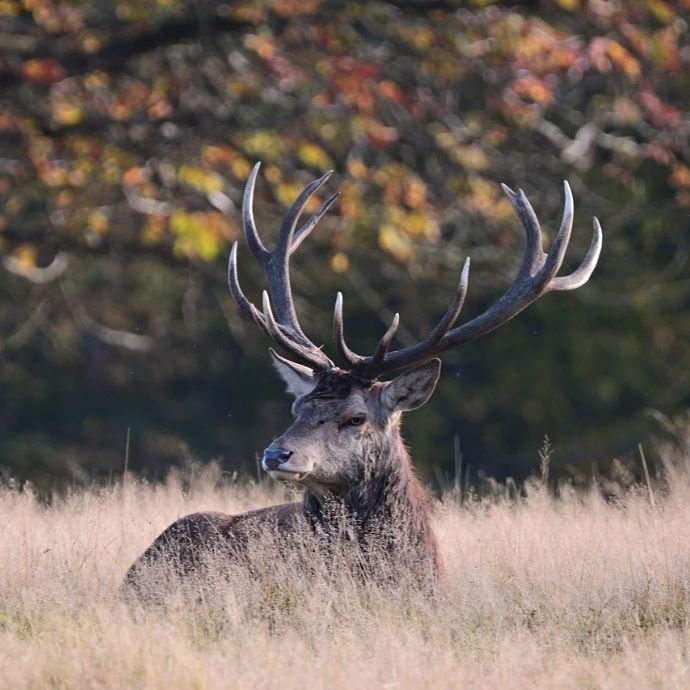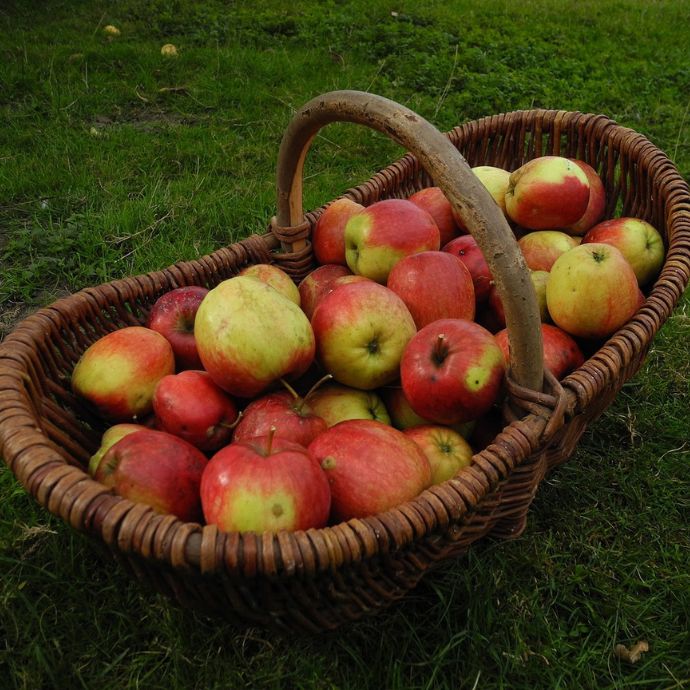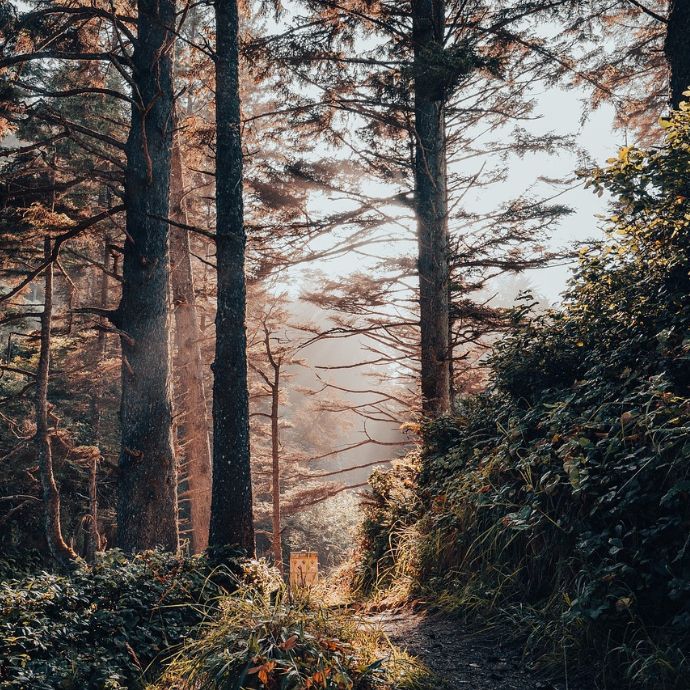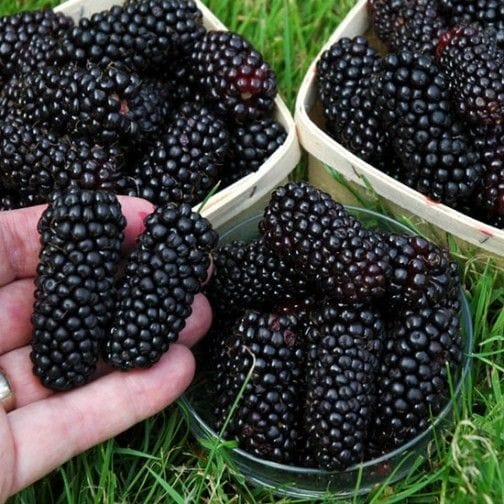Advice & Inspiration
How to Grow Blackberries in the UK

Why grow your own blackberries? After all, you might think, they’re hanging off every hedge in the countryside in August and September. But then you taste a cultivated one and you’re hooked!
Unless you’re a particular fan of scratched arms and avoiding dog walking routes, growing your own juicy, plump blackberries in your garden is a must. They’re sweeter and larger than hedgerow pickings, and as for the squashy, overpriced shop bought version – please. Let’s not even go there.
Blackberries are one of the hardiest, most pest-proof fruits you can grow, and many of our growers’ blackberry varieties are even thornless. Just follow this guide from our growers and you’re laughing. Whatever would Seamus Heaney say?
Jump to:
- Growing blackberries from seed
- Growing blackberry plants
- How much space do blackberry plants need?
- How much water do blackberry plants need?
- Do you need to feed blackberry plants?
- Can you grow blackberry plants in pots?
- Blackberry plant growth rate
- How to prune blackberry plants
- Propagating blackberry plants
- Blackberry plant problems
- Harvesting blackberries
- Storing blackberries
Growing blackberries from seed
Blackberry seeds aren’t widely sold, so you’ll have to get some from a ripe blackberry. Choose some from a healthy plant with good-sized fruit and remove the seeds by pushing the fruit through a fine mesh sieve, then rinsing them clean and letting them dry.
Your seeds will then need to be stratified before they can germinate – this involves putting them in a plastic bag with some damp sand, moss or vermiculite for 8-12 weeks. After this, soak the seeds in water for a day or two to soften the seed coating and encourage germination.
Now you’re ready to plant! Either sow the seeds directly outside in spring or summer (risky) or in pots indoors (more reliable). Place them on the surface of the soil or compost about 10cm apart or in individual pots, cover them with a thin layer of the same or of vermiculite, and keep the soil consistently moist but not waterlogged.
Keep your seeds in a place with full sun (6-8 hours a day – a sunny windowsill is perfect) and you should see signs of germination within a few weeks. Once your plants are large enough to handle, you can harden them off and plant them out in their final position.

Growing blackberry plants
If you want your blackberries sooner (and want to guarantee the variety of your choice), you can also choose between bare root and potted blackberry plants which have been grown on a nursery – both are easy to plant and grow: here’s how.
When to plant blackberries
Bare root blackberry plants are only available between November and March, when they’re in their dormant phase. This means that they can be dug up straight from the field and sent to you without a pot or compost. You can plant them at any time during the dormant months as long as the ground isn’t waterlogged or frozen.
Potted blackberry plants are available all year round and can be planted at any time, provided the ground conditions are suitable. The best time for planting these is in winter, but as long as the weather isn’t too hot or dry when you plan to plant, you can’t really go wrong.
Where to plant blackberries
The best place to plant your blackberries is in a place with full sun or partial shade – the sunnier the spot, the better your crop will be. Blackberry plants thrive in moist, well-draining soil, so if yours is on the heavy clay, sand or chalk side, make sure you mix in plenty of compost or well rotted manure before planting.
It’s best to plant your blackberries next to a natural support structure like a wall or fence, but you can also grow them up a trellis, arch or horizontal support wires.
Planting bare root blackberries
Bare root blackberry canes should be planted as soon as possible after you receive them. First, soak the roots in a bucket of water for up to an hour to detangle them, then dig a planting hole as deep as the roots and three times as wide. Spread out the plant’s roots and position it in the centre of the hole, then fill in the soil and firm it down well before giving it a good watering.
Planting potted blackberries
Gently remove your blackberry plant from its nursery pot and dig a hole as deep as the roots and three times as wide. Position your plant in the centre of the hole at the same level it was in its pot, then fill in the soil and firm it down well before watering well.

How much space do blackberry plants need?
It’s important to space your blackberry plants out well, as they grow quite large and need plenty of air flowing between them to avoid damp and mould. You should leave about 1.5m between them, but if you have a more or less vigorous variety, simply adjust this distance accordingly. They may look a bit sparse when you first plant them, but they’ll fill the space in no time.

How much water do blackberries need?
When your blackberry is newly planted, you’ll need to water it regularly until its root system develops fully – this will take about a year. After that, your plant will develop a natural drought tolerance, so you’ll only have to water it in hot or dry spells. Plants in pots need more regular watering, so be sure to check the soil in these regularly, and don’t let it dry out.

Do you need to feed blackberry plants?
Blackberry plants will do just fine without fertiliser, but giving them a feed once a year can really improve your berry crop. You can do this in spring, using a general-purpose plant food or one that’s high in potassium. At the same time, add a new layer of mulch around the base of the plant, to keep moisture in the soil and reduce competition from weeds.

Growing blackberries in pots
Although most older blackberry varieties grow too large for pots, there are now plenty of more compact varieties that are perfect for container gardeners, such as Waldo or Loch Ness, and even some that you can grow in a hanging basket.
Use a large pot (at least 45cm wide and deep), filled with new compost or garden soil and sit it in a sunny place such as a patio, deck or balcony. Water your plant regularly and feed it twice a year – once in spring and once more in summer.

How fast do blackberry bushes grow?
Blackberry bushes are renowned for their fast growth, which can be a blessing or a curse! A new plant can go from first leaves to 1.8m within a year, which is great if you’ve got a fence to cover, but you might prefer to prune them back to a more manageable height.
The canes or stems only live for two years, growing in the first year and fruiting in the second, after which the plant grows new ones and the cycle starts again.

Pruning blackberries
Once your second year blackberry canes have finished fruiting (typically in mid to late autumn), cut them right down to ground level to allow the plant space and energy to grow new ones. At the same time, you can do a bit of training by tying in the new growth to your supports.
You can also trim your canes in spring (tip pruning) to about 60cm high. As well as keeping them neat and tidy, this will encourage the stems to produce more shoots and increase your berry harvest.

How to propagate more blackberry plants
Once you’ve got an established blackberry bush, you can make new ones from the existing plants. You don’t even need to take cuttings or pot them up – just stick the ends of the longest, most vigorous stems into the soil (spring or summer is the best time for this) and they’ll take root.
This is often called tip layering. If your stems are especially long and vigorous, they might do this all by themselves! Once the new plant is established and putting on new growth, you can detach them from the parent plant.

Blackberry problems
Blackberries are very hardy plants, with cultivated varieties being bred with excellent disease resistance. From time to time though, you may encounter a pest or disease issue – and prevention is better than cure!
Birds
Birds like robins and thrushes love to eat ripe blackberries, which isn’t such a problem if you’ve got plenty to spare, but while your plants are still getting established, it’s a good idea to protect your hard-earned crop.
You can do this by netting your plants when the berries start to ripen, or growing them in a fruit cage. Some growers also have success with motion-activated sprinklers or scarecrows.
Aphids
Most plants get the odd attack of aphids (AKA greenfly or blackfly) and if the numbers are small, you’re probably best leaving them alone. However, if there’s a large population of these sap-sucking insects on your blackberries, especially if they’re young plants, it can weaken them.
To get rid of aphids in the short term, spray your plant with a homemade vegetable oil and soap mixture, wipe them off with a damp cloth or blast them with a hosepipe. A longer-term solution is to encourage aphid predators like ladybirds, hoverflies and lacewings, by planting their favourite plants nearby.
Raspberry beetle
Raspberry beetles are 4mm long brown insects that are also partial to a blackberry, but it's their worm-like offspring that do the damage. These little grubs nibble the fruit at the stalk end, leaving brown or grey dried-up looking patches that render the berries inedible.
If you’re unlucky you might also encounter them hiding in the berries themselves, so watch out if you eat your fruit straight off the plant!
Grey mould
Like all soft fruits, blackberries are susceptible to moulds and mildews, but there’s a lot you can do to prevent this. Mould is usually a result of damp, humid conditions or overcrowded plants and if left untreated, it can spread throughout your fruit crop and onto the plant’s foliage.
Grey mould is the most common, appearing as patches of furry grey or brown on the fruit. The best way of preventing it is to keep your plants well ventilated, pruning out any overcrowded stems to maintain a good airflow through the stems.
Checking your plants daily for harvestable berries and picking them as soon as they’re ripe also helps. Use or preserve your blackberries quickly to avoid moulds developing in containers of overripe or squashed fruit.
Suckerrrrrs
Blackberries reproduce by means of suckers – baby plants that spring up in the ground around the parent plant. Great, free plants, you might think – and to a point I agree, but if you allow them to get too overcrowded, it can encourage fungal diseases and prevent the existing plants getting enough sun for a decent crop.
Keep an eye on your plants, and where the suckers are springing up. If they’re far enough from the parent plant you might want to leave them to grow, but if they’re growing from the base of the plant below the soil, you’re best off pulling these out as they can weaken the existing plant.

Harvesting blackberries
You should see your first blackberries ripening in the second year after planting, at any time from early summer to early autumn, depending on the weather, growing conditions and variety. They don’t ripen any further once they’re picked, so make sure you let them get plump and fully coloured before harvesting.
Your blackberries should come away easily from the plant when you pull them, and should be handled gently to avoid squashing them. If your plant is a variety with thorns, wear long sleeves to go picking - dark coloured clothes are also best, as the juice can stain.

How to store your blackberry crop
Blackberries are best eaten fresh, as they only keep for a day or two on the kitchen counter and about a week in the fridge (don’t wash them first, or you risk them going mouldy). Since you’re likely to have a large crop to use up, it pays to have a good jam, wine or cordial recipe to hand!
Blackberries also freeze well and keep for up to a year in the freezer. First lay out your blackberries on a baking tray with plenty of space between them, then when they’re frozen, you can transfer them to a freezer bag. This avoids them melding together (although this may not be a problem if you’re using them for crumble).
Once you’ve mastered the art of blackberry growing, why not try some of their tasty hybrids?
